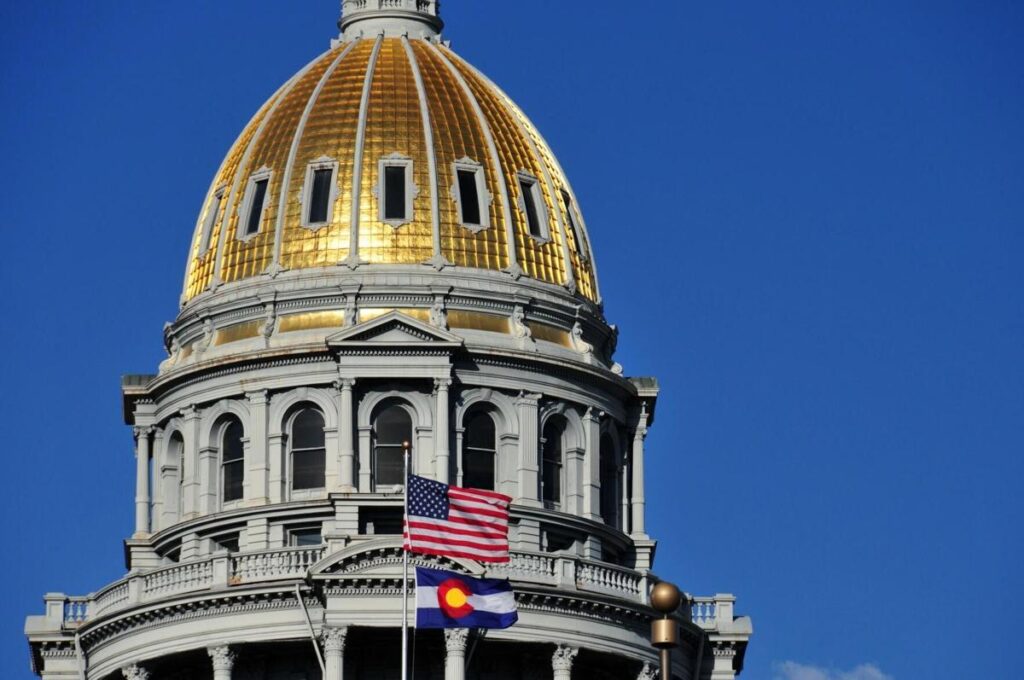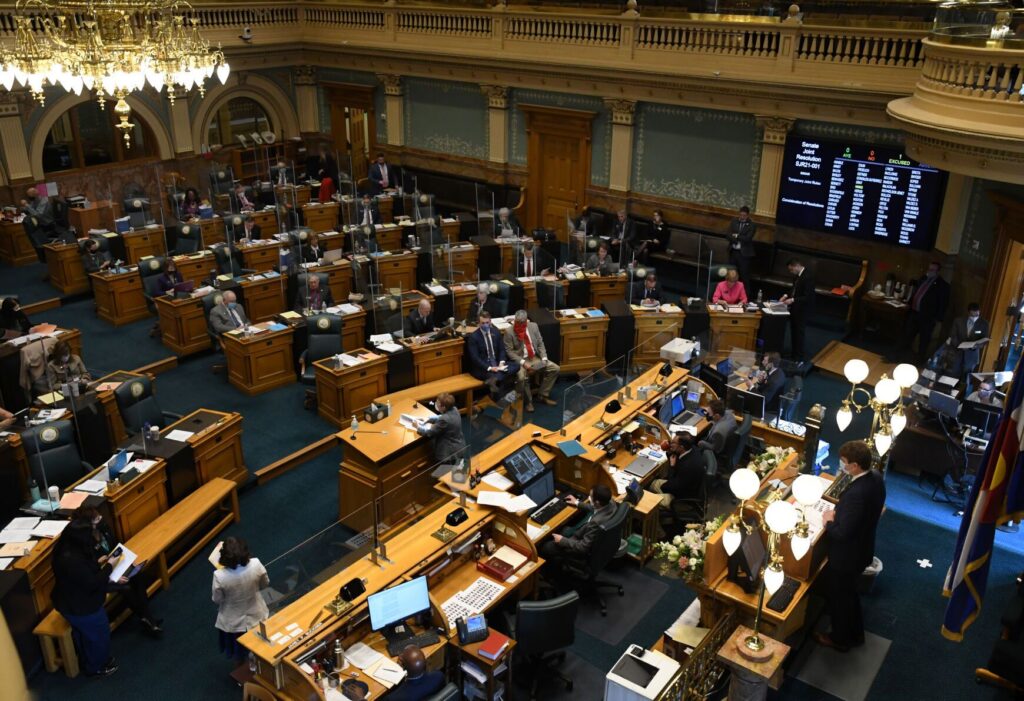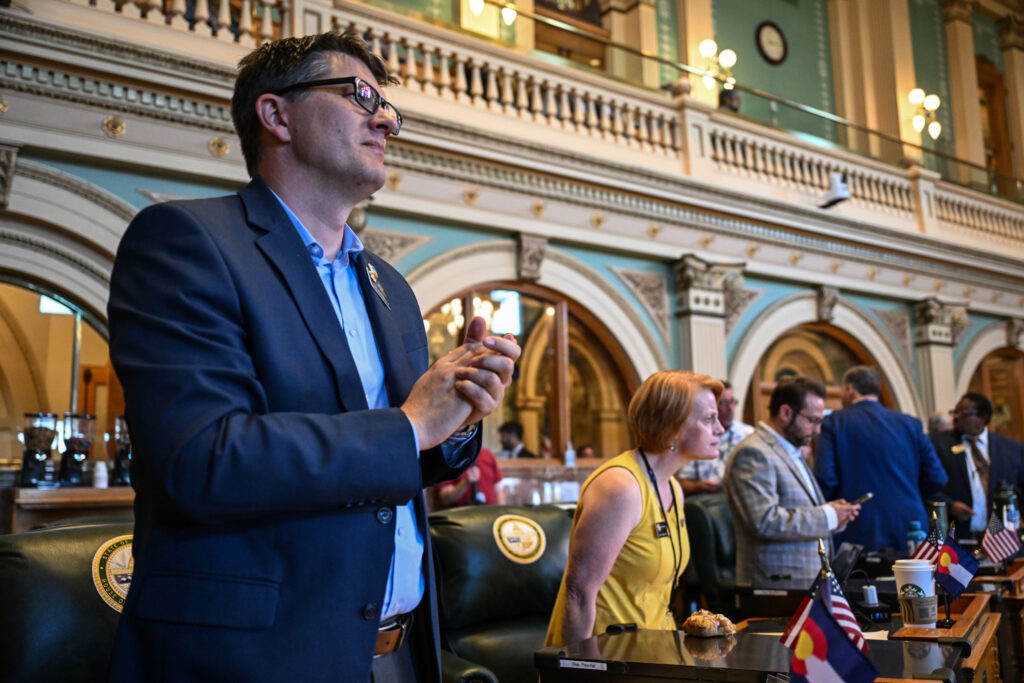Gov. Jared Polis announces $252.5 million in cuts to 2025-26 state budget

Gov. Jared Polis signed an executive order on Thursday, initiating the process to cut $252.5 million in cash and general funds from the 2025-26 budget, with the most significant impact on the Department of Health Care Policy and Financing, which administers Medicaid.
Polis also signed into law on Thursday Senate Bill 1 from the recently concluded special session. That measure requires him to meet with the Joint Budget Committee to review the spending reduction plan. That meeting will take place at 2 p.m. on Thursday.
Polis said he signed the remaining bills from the special session, including changes to tax policy contained in five bills, measures modifying a November ballot measure on school meals and SNAP, and two measures to provide funding to the state Health Insurance Affordability Enterprise. Those dollars will be used to subsidize health insurance premiums on the individual market for the 2026 year.
The actions taken during the six-day special session, as well as Polis’ executive order, are intended to put the state’s budget back into balance. Democrats have claimed that the signing of HR 1, the federal budget bill, resulted in losses of $1.2 billion in corporate and individual income tax revenue.
Colorado had a small surplus that the state government could apply, which reduced the shortfall to around $783 million, along with a small amount of new tax revenue from the federal budget.
The governor has planned to shore up the budget through three pots. The first is the $253.2 million in anticipated corporate tax revenue that could result from the measures adopted, which were almost entirely introduced by Democratic lawmakers, during the special session. The most significant portion of this is through the sale of tax credits to C corporations, which could raise approximately $100 million. Polis said Thursday he believed those sales would be fully realized.
The second option is to tap the state’s general fund reserve, which is set at 15% of the general fund’s spending. That’s about $2.3 billion, but both lawmakers and the administration have been hesitant to tap more than about 2% of the reserve. That’s between $315 million and $328 million. But by law, those dollars must be restored in the next budget year, unless lawmakers decide to reduce the reserve.
Both Polis and Mark Ferrandino, the director of the Office of State Planning and Budgeting, have stated that taking more than 2% would be fiscally irresponsible, as state economists have predicted a 50% chance of a recession in the next two years. The general fund reserve is intended as a rainy day fund, a hedge against recession.
This is not a recession, Polis said.
The third part concerns the cuts that will take effect on Sept. 1.
The cuts originate from three areas: the hiring freeze that took effect on Aug. 27, resulting in approximately $3 million in savings.
Budget cuts to eight state agencies, all from the general fund:
Department of Corrections: $3.68 million for transgender healthcare
Department of Health Care Policy and Financing: $79.3 million, through cuts to eight different programs. More details on those cuts, which will affect children’s health, treatment programs, reproductive health for undocumented residents, adult dental, behavioral health and adult comprehensive services, will be made available later today. At least half of those cuts will impact provider rates.
That’s been a bone of contention between the governor and the Joint Budget Committee. In last November’s budget submission, Polis suggested about $68 million in cuts that the JBC did not adopt, which included provider rates. The legislature has worked to increase provider rates over the last several years, but Polis called those increases excessive in November.
Department of Higher Education: $12.7 million, largely cuts to the fee-for-service funding. Ferrandino explained that the colleges and universities got a $22 million increase in their funding for 2025-26 and about $9 million of the cuts are from that increase. He noted that the governor did not recommend such a high increase, and that’s also part of the $68 million difference from November.
Department of Public Health and Environment: $5 million, through cuts to the health disparities grant program and from distributions to local public health agencies.
Another $146 million will come from cash funds. That includes $105 million from the state’s Affordable Housing Support Fund, paid for with one-tenth of 1% of state income taxes and approved by voters through Proposition 123 in 2022. The measure contained a caveat that said in years where state revenue is below the TABOR limit, the measure does not impact TABOR refunds but may reduce the amount of money available for the rest of the state budget.
Under those circumstances, and Polis said HR 1 put the state below the TABOR limit, the state legislature can reduce part of the new funding to the affordable housing programs to balance the state budget.
However, Polis said the funds being transferred from Prop 123 are those that would go to the Office of Economic and International Trade (OEDIT), not the funds sent to the Department of Local Affairs. The ballot measure stated that approximately 60% of the Prop 123 funds would be allocated to OEDIT.
The rest of the cash funds that make up the $146 million include the CollegeInvest administration fund ($9.2 million), several severance tax funds, a school and child care clean water drinking fund ($4 million) a disability support fund ($5 million), and a mobile home water quality fund ($3 million).
Those cash fund transfers will be part of the supplemental budget process in the 2026 legislative session, as will all the other cuts announced Thursday.
“I do not take these actions lightly,” Polis said in his signing statement, “but the budget deficit created by H.R. 1 requires us to make hard choices.”
Polis said he intends to send the pens used during Thursday’s bill signing to the four Republican members of Congress from Colorado, as any one of them could have voted against the federal budget, and that would have killed the measure. It passed on a 215-214 vote in May.










